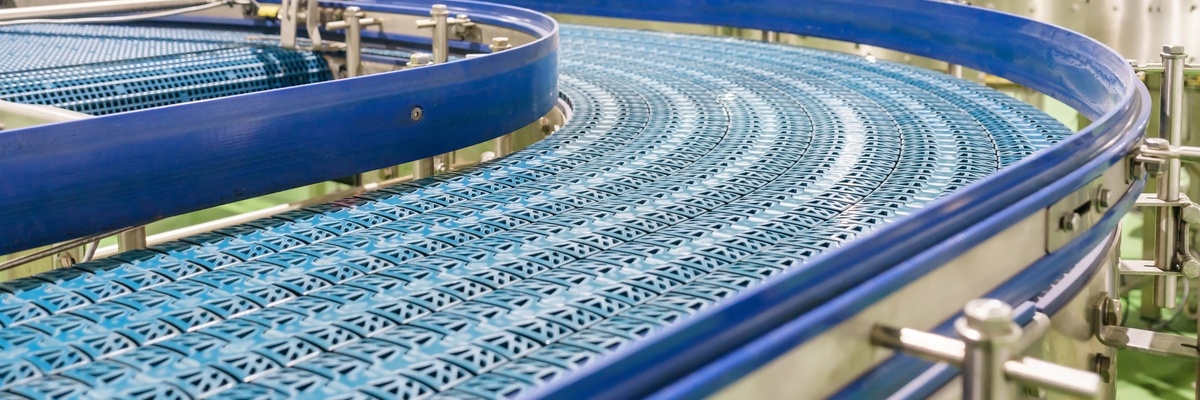Bulk Material Transfer: Dilute vs. Dense Phase
In the world of material transfer systems there are two main ways to get materials from point “A” to point “B”, either via a mechanical system (conveyors, tracks, belts) or through a pneumatic system. Pneumatic systems offer several benefits for conveying materials, and the design of these systems are largely dependent on the type of materials being transferred. However, if you’ve already decided that a pneumatic material transfer system (or troubleshooting one for any reason) is the one for you, pneumatic conveying systems operate in one of two different transfer modes, dilute or dense phase.
Dilute Phase
Dilute-phase conveying is the most widely used method for pneumatically transporting bulk materials. It accomplishes this process of pushing or pulling (positive or negative pressure) materials from one location to another by suspending them in a high velocity airstream (anywhere from 3,200 feet per minute up to 8,000 FPM). Dilute phase transfer operates on the principal that the material is being transferred above its minimum suspension velocity. Once a material is sped up to its minimum suspension velocity, it becomes airborne and is carried in mid-air rather than dragged along or bounced through the system.
Because the material being transferred spends most of its journey through the system suspended in mid-air, dilute phase can also be called a suspension flow system. Characteristics of dilute phase transfer include a relatively large amount of air moving at high velocities, low pressures, and a small amount of material relative to the amount of air being used (the material-to-air ratio).
The high-speed qualities of dilute phase systems are the key characteristic. The high velocity air makes them able to operate as a continuous process. Once the system has begun loading or unloading, the material is held constantly in the airstream, and the airstream is consistent. This makes the flow rates and loading times very predictable and controllable.
The high speed also allows dilute phase systems to transport material over a long distance with less aid or additional air streams. But, the same high-speed characteristics can work against a dilute system. The material can be broken or destroyed as it impacts the walls, fragments can remain after an impact and cause mixing, and if the material is abrasive it can wear out the components of the system from continuous impact over a short period of time.
Dense Phase
While dilute phase transfer relies on raw airspeed, dense phase relies on a combination of lower velocity with high pressures that causes the material to clump up. This clumped/rolling behavior is what is called “fluidizing.” When groups of solid materials move or act like a liquid, they are acting in a fluidized state. This is helped by the evenly distributed pressure throughout the system which causes even movement and pressure drop, which maintains the rolling clumps of material as they flow along.
Dense phase is less common than dilute phase, but offers some advantages. First, if the materials that are being conveyed are friable (breakable, fragile) they will incur far less damage if they travel in dense phase because of the natural cushion effect that happens during dense phase transfer. Because dense phase material moves in slow clumps, the components of the system as well as the material suffer less impact-related damage, which decreases maintenance costs and increases the life of the system.
There are, of course, disadvantages to using dense phase systems as well. First, dense phase systems are generally more expensive to maintain and operate, generally because they struggle in moving material over long distances. Second, the most important limiting factor is that not all bulk materials can be fluidized. Being able to move material in a fluidized state is the staple of a dense phase transfer system, and without that property, dense phase is not possible. Finally, dense phase systems can become plugged if the right considerations and calculations are not made. Because the material is more concentrated, it is more susceptible to causing a clog in the system.
Choosing a Transfer Mode
Determining the transfer mode of a pneumatic conveying system is the most defining factor on how the system will function and whether or not it will function successfully. Every aspect of the system will be impacted based on the transfer mode. How far is the material being transferred? How large/dense/hard/heavy is the media? Is the system mobile or stationary? The answers to all of these questions will help to shape your decision to go with either dense or dilute phase transfer, or to diagnose the type of transfer a system may already be using.
About Erik Kane
Erik Kane has been a proud member of the Hose Master team for the past 7 years. During that time, he’s helped develop primary research programs, training tools, promotional materials, assisted metal hose end users and distributors on-site, and worked in production on Hose Master’s manufacturing floor. When he’s not digesting hose information or blogging about the industry, Erik enjoys playing video games, watching Westworld with his dog Nibblet, and powerlifting.



